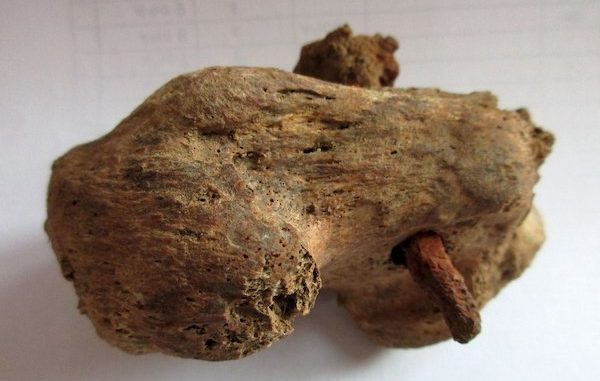
Archaeologists in the UK have uncovered skeletal remains of a man in Roman England, who could’ve possibly been a slave, who died from crucifixion in the third or fourth century AD. Their findings were published this week in the British Archaeology magazine.
This finding is only the fourth ever example of crucifixion recorded through archaeological evidence. Only one other skeleton has been found with a nail through the bone, back in 1968 at Giv’at ha-Mivtar in Jerusalem.
The team, who chanced upon the man’s remains—including a nail hammered through his heel bone—posit that the victim could be between the ages of 25 and 35. Frighteningly, the thinning in his leg bones could indicate that he had been “chained to a wall” for a long time before being crucified.
“[We] think he was one of [the] local native population,” said David Ingham, a project manager at Albion Archaeology.

Image via Albion Archaeology
This man’s skeleton was found in a cemetery with the graves of 47 other people, all of which are believed to have been subjected to hard labor. Near the graves, the scientists also found a workshop where animal bones were split. They believe ancient workmen split the bones so that they could use the marrow to make soap or candles.
Ingham told Live Science it was possible that the victim, along with the other skeletal remains, were of enslaved people. Back in 212 AD, Roman citizenship was given to all free people who lived within the Empire, and crucifixion was not a punishment that usually befell citizens, hinting that the man who was tortured might’ve been a slave instead.
Crucifixion was often reserved as punishment for “one of the most serious crimes,” which could include treason or rebellion. The victim would have had his arms tied to a cross, with his feet nailed to the ground—hence the nail found going through his heel bone. Ingham explained that such a position would eventually suffocate the victim.
Even more remarkable was the fact that not only was the man crucified, but his body was also later reclaimed and given a formal burial among others in the region.

Image via Albion Archaeology
[via

Leave a Reply